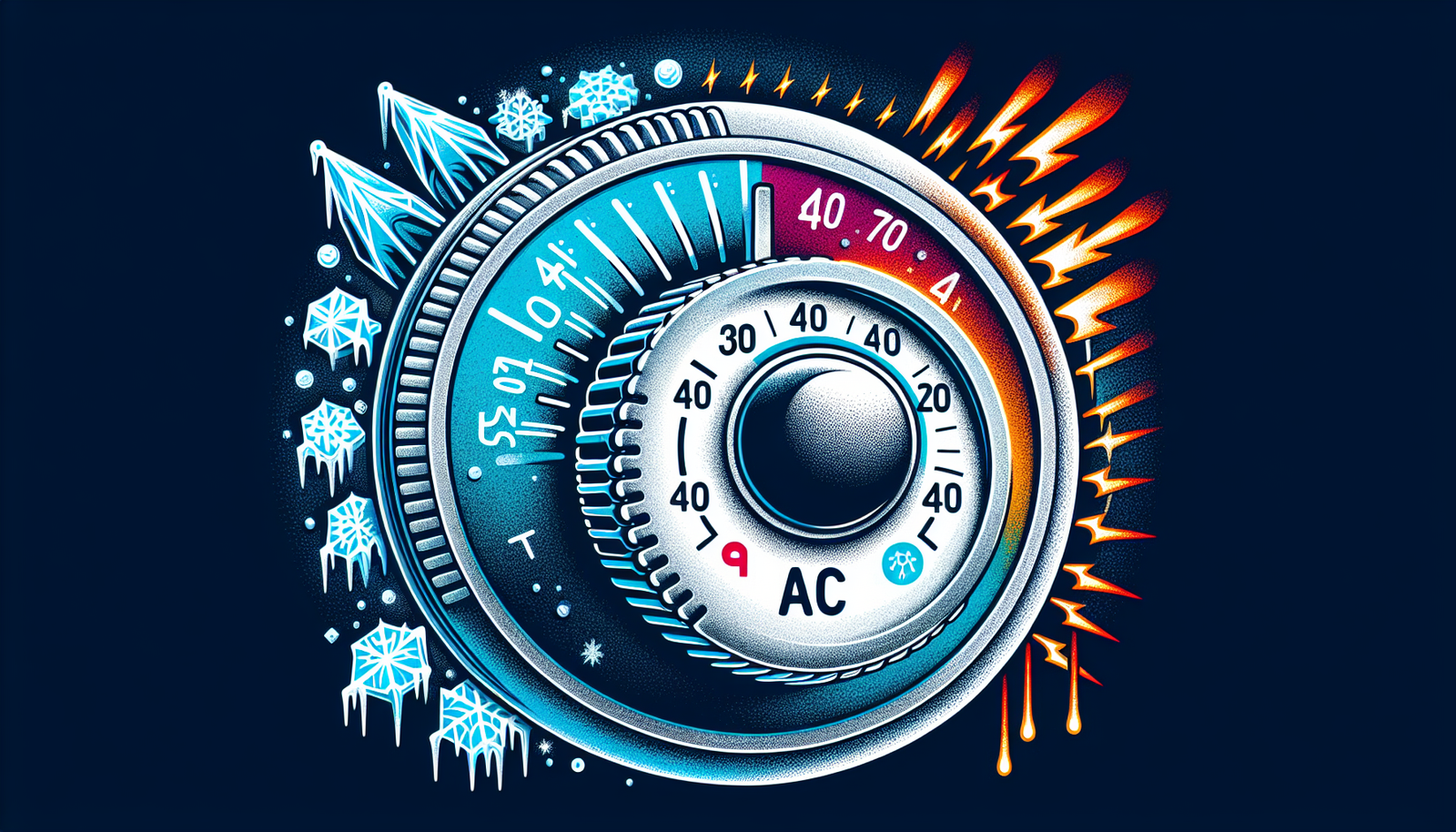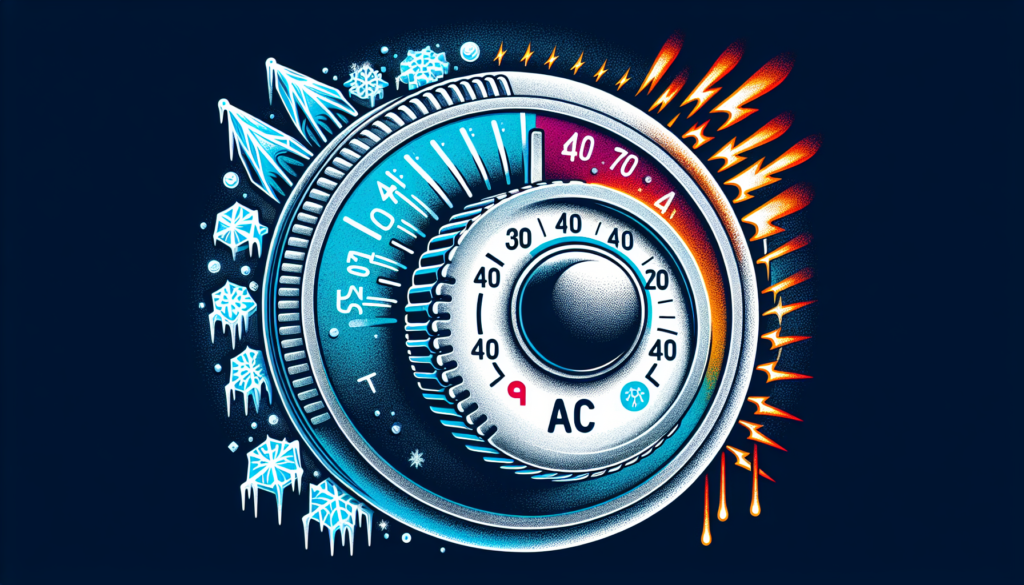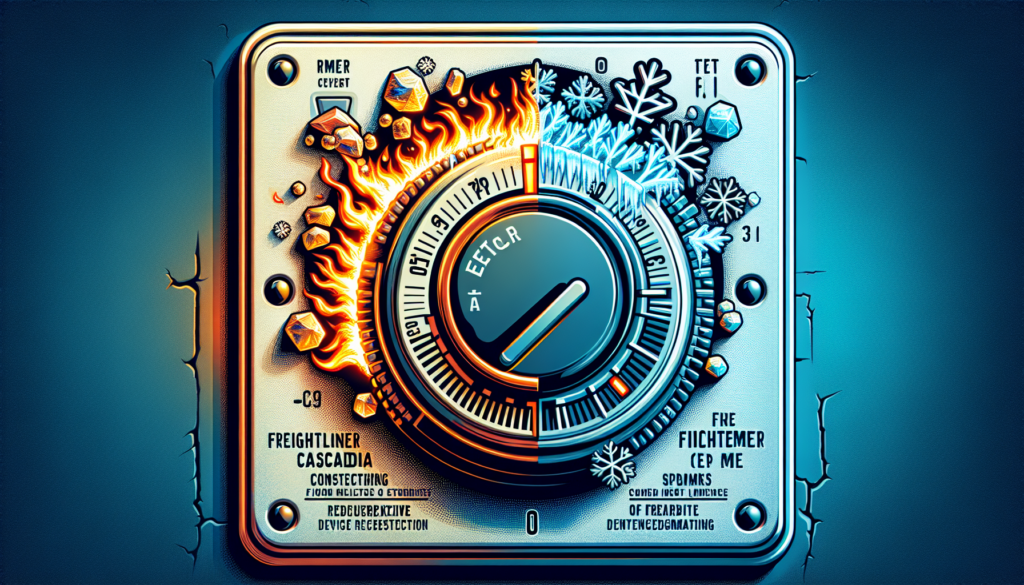
Imagine you’re settling in for a long haul in your Freightliner Cascadia, but something’s not quite right with the cabin temperature. It’s possible that your A/C thermostat could be on the fritz, a minor issue that can lead to major discomfort. In this article, you’ll learn to spot the telltale signs of a faltering thermostat, from inconsistent temperatures to unexpected system shutdowns. Knowing these symptoms can save you time and stress, ensuring your ride is as cool and comfortable as it should be, no matter the distance.
Understanding the Freightliner Cascadia A/C System
When you’re on the road, especially during those warm months, your Freightliner Cascadia’s air conditioning (A/C) system becomes your best friend. Understanding how it works can be crucial when you’re miles away from the nearest service station and you need to troubleshoot or simply maintain it properly.
Basics of A/C Thermostat Function
The A/C thermostat in your Freightliner Cascadia is essentially the control center for your cabin’s temperature. You set your desired temperature, and the thermostat signals the A/C system to either pump in cold air until that temperature is reached, or to stop once it’s maintained. It measures the current temperature inside the cabin and activates or deactivates the A/C compressor accordingly.
Interactions with Other HVAC Components
Your A/C thermostat doesn’t work alone. It interacts seamlessly with various components of the heating, ventilation, and air conditioning system (HVAC). The blower motor, condenser, and evaporator all respond to the commands of the thermostat. This teamwork ensures that your cabin’s ambiance remains exactly where you want it to be.
Thermostat’s Role in Temperature Regulation
The role of the thermostat in temperature regulation can’t be overstated. It’s responsible for ensuring the system reacts correctly to your settings, determining when to cool down or heat up the cabin. Your comfort on long hauls relies heavily on this device doing its job correctly.
Common Symptoms of a Failing A/C Thermostat
Just like any component of your Cascadia, the A/C thermostat can fail. Recognizing the symptoms early on can save you from discomfort and potential costly repairs.
Inconsistent Cabin Temperatures
If you’re noticing that the cabin temperature fluctuates more than the stock market, it’s a sign that your A/C thermostat may have an issue. Instead of a steady cool or warm environment, you might experience random shifts that don’t correlate with your thermostat settings.
A/C Fails to Turn On or Shuts Off Unexpectedly
You’ve set your desired temperature, but your A/C either won’t start, or it shuts off without warning. This pointer could mean the thermostat isn’t communicating effectively with the A/C system, causing it to react incorrectly or not at all.
Thermostat Reading Does Not Match Cabin Temperature
When the numbers on the thermostat display are just as unreliable as guessing the weather, there’s likely a calibration problem. If the actual temperature in your cabin doesn’t reflect what’s shown on the thermostat, this discrepancy can indicate the thermostat is failing.

Temperature Control Issues
Even a slight malfunction in your thermostat can wreak havoc on your temperature control, turning a smooth drive into an uncomfortable journey.
Inability to Maintain Set Temperature
You expect your cabin to stay comfortably at the temperature you’ve set. When your Cascadia fails to maintain this, the thermostat could be at fault, not just ruining your comfort but potentially affecting other A/C system components through inconsistent operation.
Overcooling or Insufficient Cooling
Does your Cascadia feel like an icebox even when you’ve eased up on the A/C, or does it feel like a sauna when you’ve cranked up the cool? Both overcooling and insufficient cooling can be symptomatic of a thermostat that’s not properly gauging and adjusting to the cabin temperature.
Thermostat Loses Calibration
Over time, like any instrument, a thermostat may lose its calibration. This means it no longer accurately assesses the cabin temperature. Recalibration or replacement might be necessary to get things back on track.
Electrical Problems Impacting the Thermostat
The electrical issues can often masquerade as mechanical faults in the A/C system. The thermostat is vulnerability here is not an exception.
Wiring Faults Leading to Thermostat Failure
If the wiring to your thermostat is damaged or frayed, it can lead to misreadings or a complete failure. Regular inspections can catch these faults before they lead to bigger problems.
Blown Fuses or Relay Problems
Your Cascadia’s thermostat relies on fuses and relays to function. If you’ve got a blown fuse or a faulty relay, the thermostat could lose power resulting in failure to control the A/C system.
Signs of Corrosion or Short-Circuits
Corrosion from moisture or short-circuits due to electrical failures can disrupt the thermostat’s operation. You’ll want to keep an eye out for these issues during routine checks or if you’re experiencing thermostat-related problems.

Mechanical Failures in Thermostat Operation
It’s not just the electrical aspects you need to be aware of—several mechanical issues can also interfere with your thermostat’s performance.
Stuck or Jammed Thermostat Components
Mechanical thermostats have components that can become stuck or jammed over time, particularly if they’re exposed to dirt or debris. This can prevent proper operation and temperature control.
Wear and Tear from Frequent Use
As with anything, the more you use it, the more wear and tear it’ll experience. Your thermostat is no different, and over time it can begin to degrade, particularly the mechanical parts, which could hinder its ability to function properly.
Impaired Response to Temperature Changes
If your thermostat can’t keep up with the temperature changes or respond as swiftly as it should, it could signal the beginning of the end for the current component.
Troubleshooting the Thermostat
There are steps you can take to figure out what’s going on with your thermostat, and sometimes the solution is simpler than you might think.
Diagnostic Steps for Thermostat Issues
Begin with the basics: check the thermostat settings, ensure it’s switched on, and look for obvious signs of damage. If all seems well, you may need to get a little more technical, employing diagnostic tools or reading fault codes that could indicate the source of the problem.
Interpreting Fault Codes Related to Thermostat
Your Cascadia’s computer system monitors the health of your A/C thermostat and can offer up fault codes that indicate specific issues. These codes can guide you to the root of the problem, whether it’s a sensor failure, wiring issue, or another component’s malfunction.
Visual Inspection for Physical Damage
Sometimes the answer lies in a simple visual inspection. Look for signs of physical damage, such as corrosion, loose connections, or anything else out of the ordinary.

Impact on Fuel Efficiency and Engine Performance
What might seem like a small inconvenience can actually have wider implications for your Cascadia.
A/C Thermostat Malfunctions Affecting Fuel Consumption
If your thermostat is causing the A/C to work harder or operate inconsistly, it can lead to increased fuel consumption. Efficient temperature control is more than just comfort; it’s also about economy.
Engine Load and Temperature Regulation
Your engine has to work harder when the A/C system is on, so if the thermostat is causing the system to engage more frequently or for longer periods than necessary, this can put additional strain on the engine.
Indirect Symptoms via Engine Performance
Notice a dip in your engine’s performance? It could be indirectly related to your thermostat. If it’s causing the A/C compressor to engage unnecessarily, it will impact the engine’s efficiency.
Warning Signals from Onboard Diagnostics (OBD)
Modern Freightliner Cascadias are equipped with advanced diagnostics that can be invaluable in flagging up issues early.
OBD Codes that Indicate Thermostat Problems
When it comes to the thermostat, OBD codes can be your early warning system. Specific codes can point to temperature regulation issues, letting you know it’s time to inspect the thermostat.
Using Telematics Data to Identify Issues
Your truck’s telematics data can also provide insights into thermostat performance and potential issues by offering a record of temperatures, system usage, and irregularities in operation patterns.
Importance of Timely OBD Analysis
Incorporating timely OBD analyses in your routine inspections can help you preemptively address issues that could grow into more significant problems down the line.

Behavioral Signs of Thermostat Distress
Sometimes, it’s the little things that give away an emerging issue with your thermostat.
Unusual Noises When A/C is Running
Unusual noises when your A/C kicks in could be a symptom of thermostat distress. It could indicate that the thermostat is failing to communicate effectively with the rest of the HVAC system.
Delayed Response to Thermostat Adjustments
A thermostat in distress may show signs of delayed response. If your A/C takes longer than usual to kick in after adjusting the temperature, it’s a clear signal something’s not right.
Fluctuating A/C Performance During Operation
If A/C performance wavers while you’re driving—not maintaining consistent temperatures, or cycling on and off too frequently—it may point to an underlying thermostat issue.
Consequences of Ignoring Thermostat Problems
Ignoring problems with your thermostat doesn’t just make your cabin less comfortable—it can lead to more severe issues down the road.
Potential for Progressive HVAC Damage
When the thermostat isn’t working correctly, it can cause other HVAC components to overwork and wear out prematurely. This leads to more extensive repairs and replacements.
Safety Risks from Overheating Electronics
Consistent issues with temperature regulation can also pose safety risks through overheating electronics, which can even escalate to a fire hazard.
Long-Term Costs of Deferred Maintenance
Simply put, the cost of ignoring a problematic thermostat can compound quickly. Not only in terms of eventual repair bills but also in the additional strain on your truck’s engine and increased fuel consumption. It’s far more economical to tackle these issues head-on as they arise.
